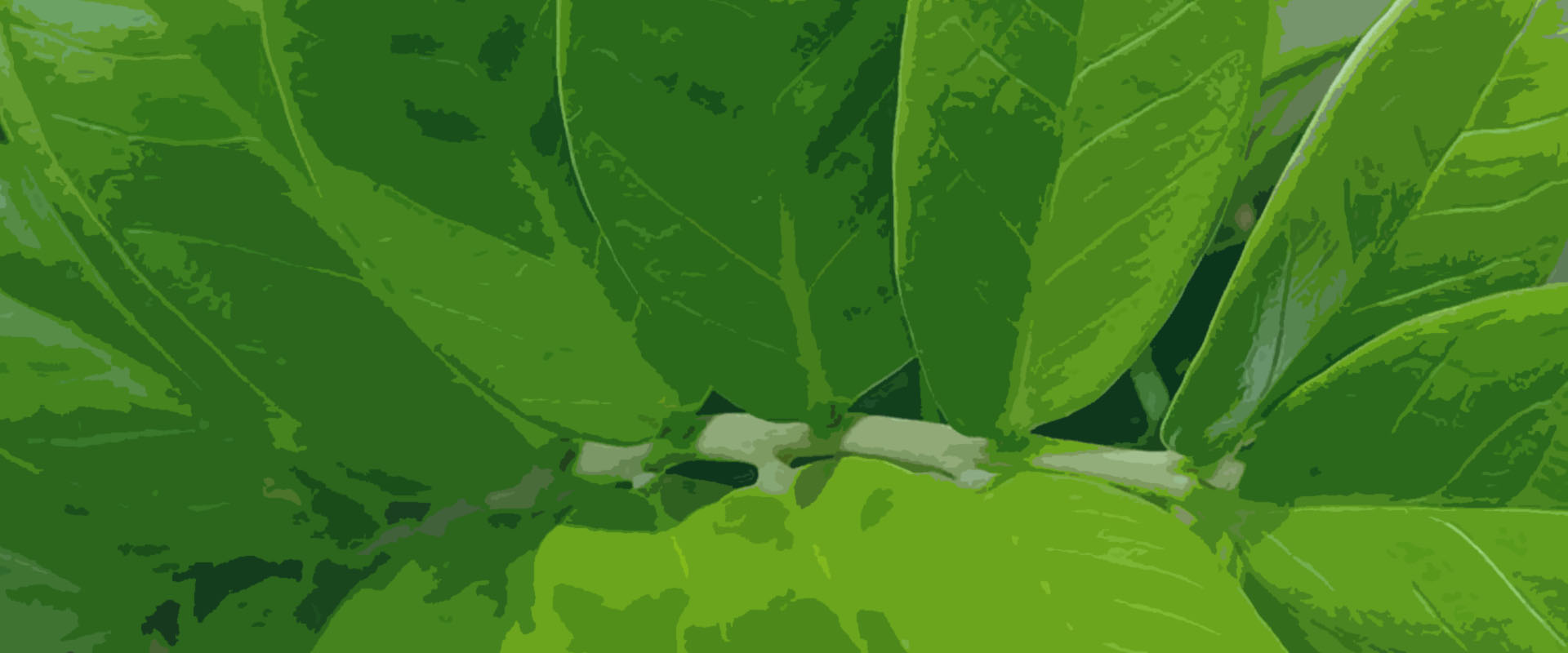
Must-Have Apartment Houseplants
As the plant lovers we are here at Tallahassee Nurseries, it should come as no surprise that we firmly believe that no interior is complete without a little green. Not only are houseplants relatively low maintenance and aesthetically pleasing, they also come with some pretty amazing health benefits. That’s what we call a win-win-win!
Plants naturally release oxygen into the air while removing carbon dioxide, improving the overall air quality. More oxygen has been associated with helping the body to work more efficiently, as well as helping the brain to feel less foggy and tired resulting in improved mood – and who doesn’t want to be less tired and grumpy?
In addition to the potential to improve your home’s air quality, your energy level and your mood, plants – specifically houseplants – help you to personalize your indoor areas, making them more welcoming while increasing sources of inspiration for you as you move throughout your home. This is especially essential if you work from your house. Creating an environment that is inspirational and comfortable makes working more enjoyable, while helping to reduce the feeling of being cooped up in an indoor space. Some studies have even concluded that the presence of plants also contribute to increased levels of productivity, improved learning abilities, and the healing of mental and physical illnesses.
Whether you want to add plants to your indoor space for the health benefits or simply because they’re trendy and fun, we’re confident that you’ll find more than one reason to love having houseplants in your home.
Here are our top picks for easy and stylish houseplants to brighten up your space!
ANTHURIUM
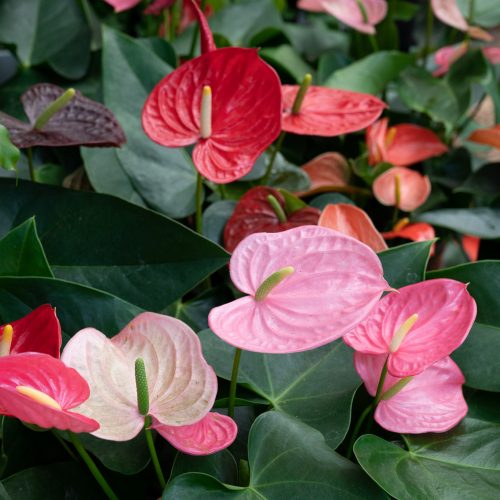
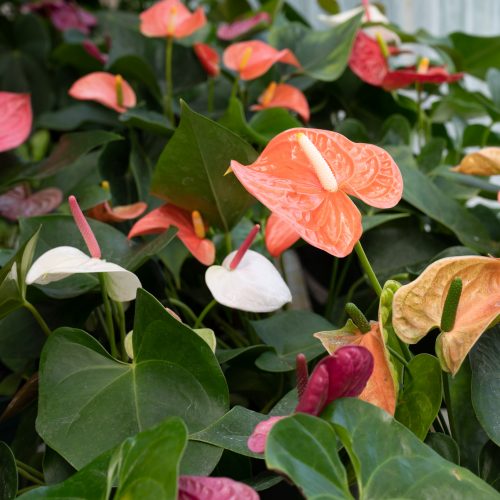
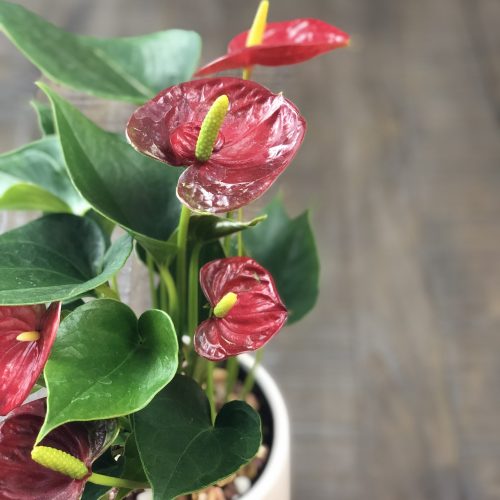
From the classic Anthurium Andraeanum (commonly known as “Flamingo Flower”) to the velvety foliage of the rarer Anthurium, this genus will never bore you. The most well-loved and hardy Anthurium Andraeanum has “flowers” that last as long as an orchid – that’s up to two months at a time. The reason? Their flowers are actually modified, colorful leaves called bracts attached to an inflorescence. Their flowers can range in color from a bright red to a salmon pink, with so many shades in between. Given the right care indoors, this plant can flower throughout the year, but the heart-shaped foliage emerges a beautiful shade of red and is pretty enough on its own that we don’t really mind if it needs a little break here and there. The Flamingo Flower has won the Royal Horticultural Society’s Award of Garden Merit, and is one of the plants included in NASA’s Clean Air Study. It’s effective in removing formaldehyde, xylene, toluene and ammonia from the air!
Anthurium care will depend on the exact species – and, of course, the rarer ones are much more finicky; but the Andraeanum is easy! Let it dry slightly between waterings and give it medium to bright, indirect light. We also recommend using a slow-release fertilizer like, nutricote, or a liquid fertilizer to encourage lots of blooms and healthy foliage.
AGLAONEMA
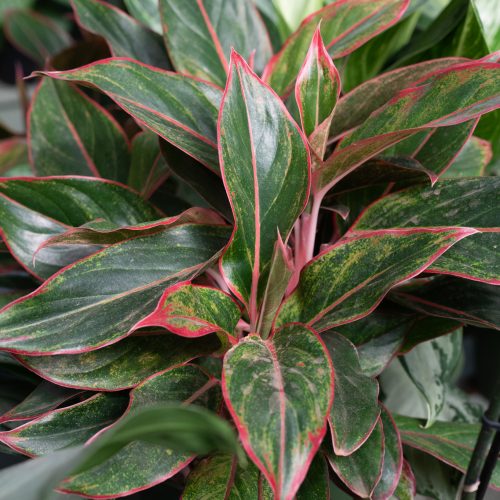
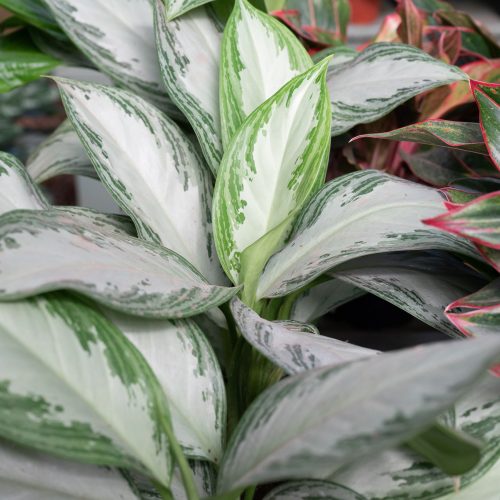
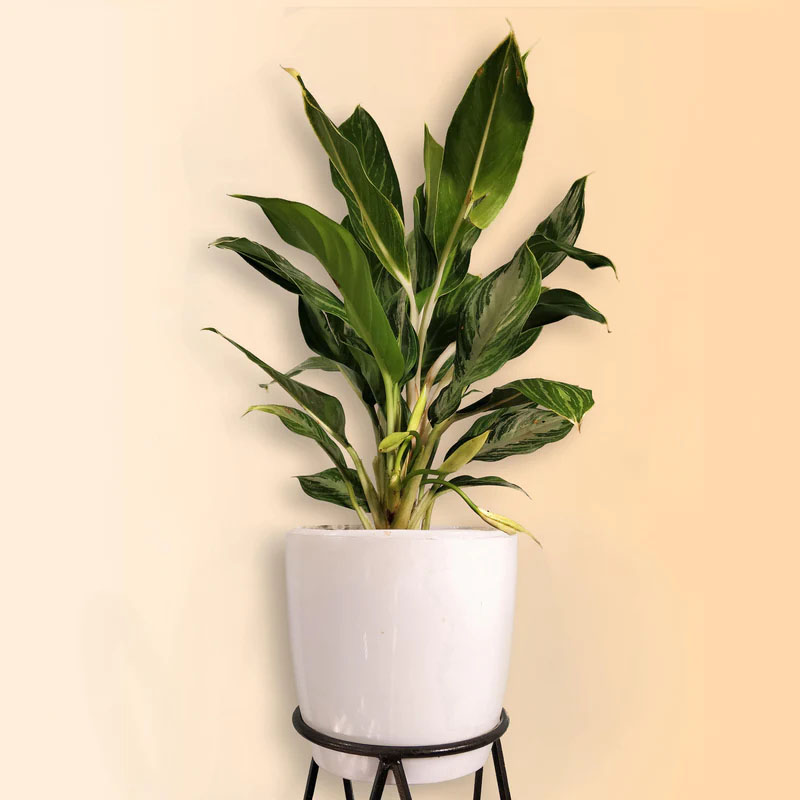
When it comes to colorful leaves, the Aglaonema (aka Chinese Evergreen) can’t be beat. There are many cultivars of this plant, and they come in many colors. These plants prefer medium to bright indirect light, but can be adapted to lower light conditions. Be sure not to overwater, and let the top few inches of soil dry out between waterings. Also a part of NASA’s Clean Air Study, it has been found effective in removing benzene and formaldehyde.
Some of our favorite varieties of this plant include “Silver Bay” which features gorgeous green & silver foliage and “Big Roy” with stunning pink & green foliage.
HOYAS
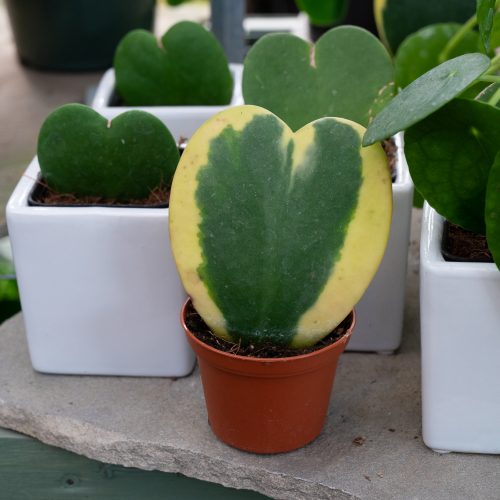
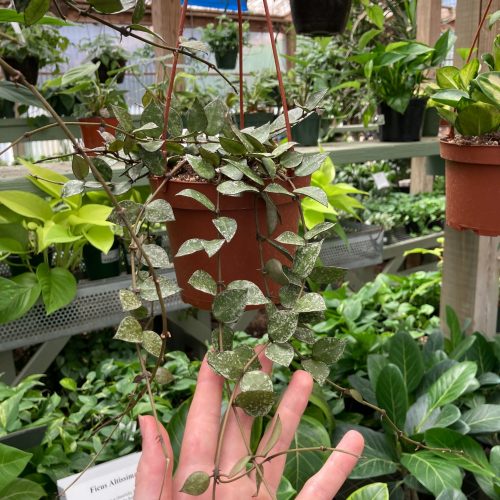
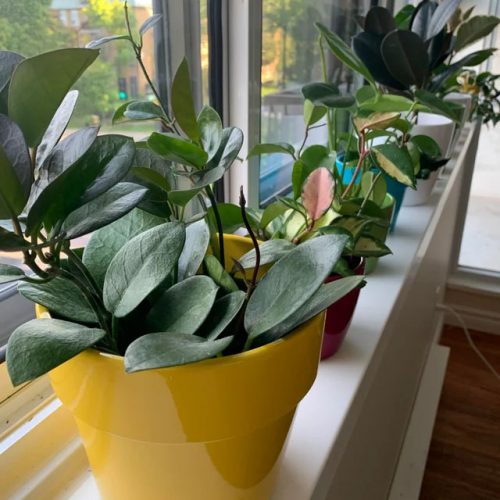
From the iconic, heart-shaped Hoya Kerrii to the classic, variegated Krimson Princess, you’ve probably heard of these popular houseplants before – and for good reason. They can vine and climb, making them a great option for a trellis or hanging basket. Hoyas have been grown and hybridized for hundreds of years, so there are plenty of varieties to choose from. An added bonus is that once the plants reach a mature size, they’re ready and willing bloomers. Color and smell of the blooms will depend on the exact species of hoya, but they typically put out a large number of blooms in a bunch growing on a spike called a peduncle. Typically seen with red centers and white margins, hoya flowers can smell sweet, floral, chocolate, cinnamon, vanilla or a combination of these things.
Watering and care will depend on the exact species, but in general they like bright, indirect light and to be allowed to dry out between waterings.
ZZ PLANT
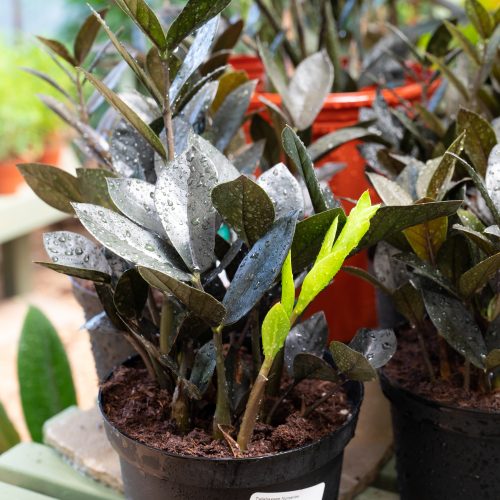
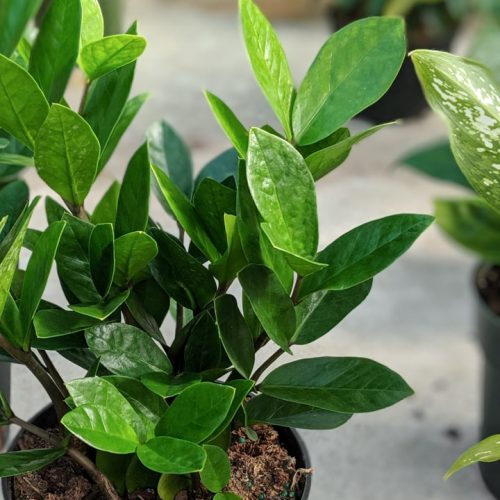
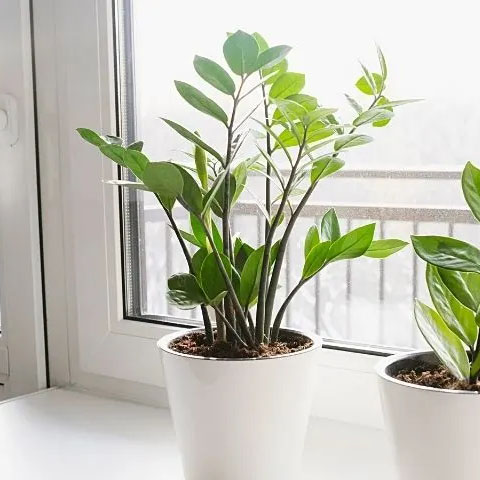
If you’re a chronic under waterer or simply a busy bee, this is the plant for you! The Zamioculcas Zamiifolia (aka ZZ plant) can thrive on neglect – as long as it’s in the right conditions. ZZ Plants are tolerant of a wide range of lighting conditions, from low light to high light. Keep in mind that the amount of watering needed will vary depending on the lighting conditions. A plant in low light will need much less water than one in high light, and will grow much slower as well. Be sure your ZZ plant is in a rich, well-draining soil mixture. Terra cotta is a great planter choice for this reason.
ZZ plants traditionally have dark green foliage, but recently a new cultivar has been established that has lime green emergent foliage that darkens to a deep black with proper lighting. According to the Clean Air Study, these plants have been found to be effective at absorbing pollutants such as xylene, toluene and carbon dioxide from the air.
Come find great plants and great help in the Greenhouse at Tallahassee Nurseries!
*This article was written by Jade, Greenhouse Staff at Tallahassee Nurseries

